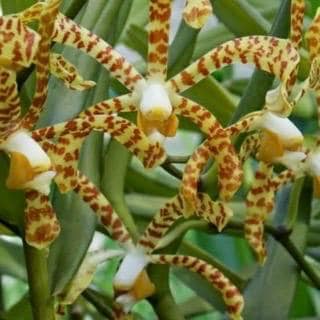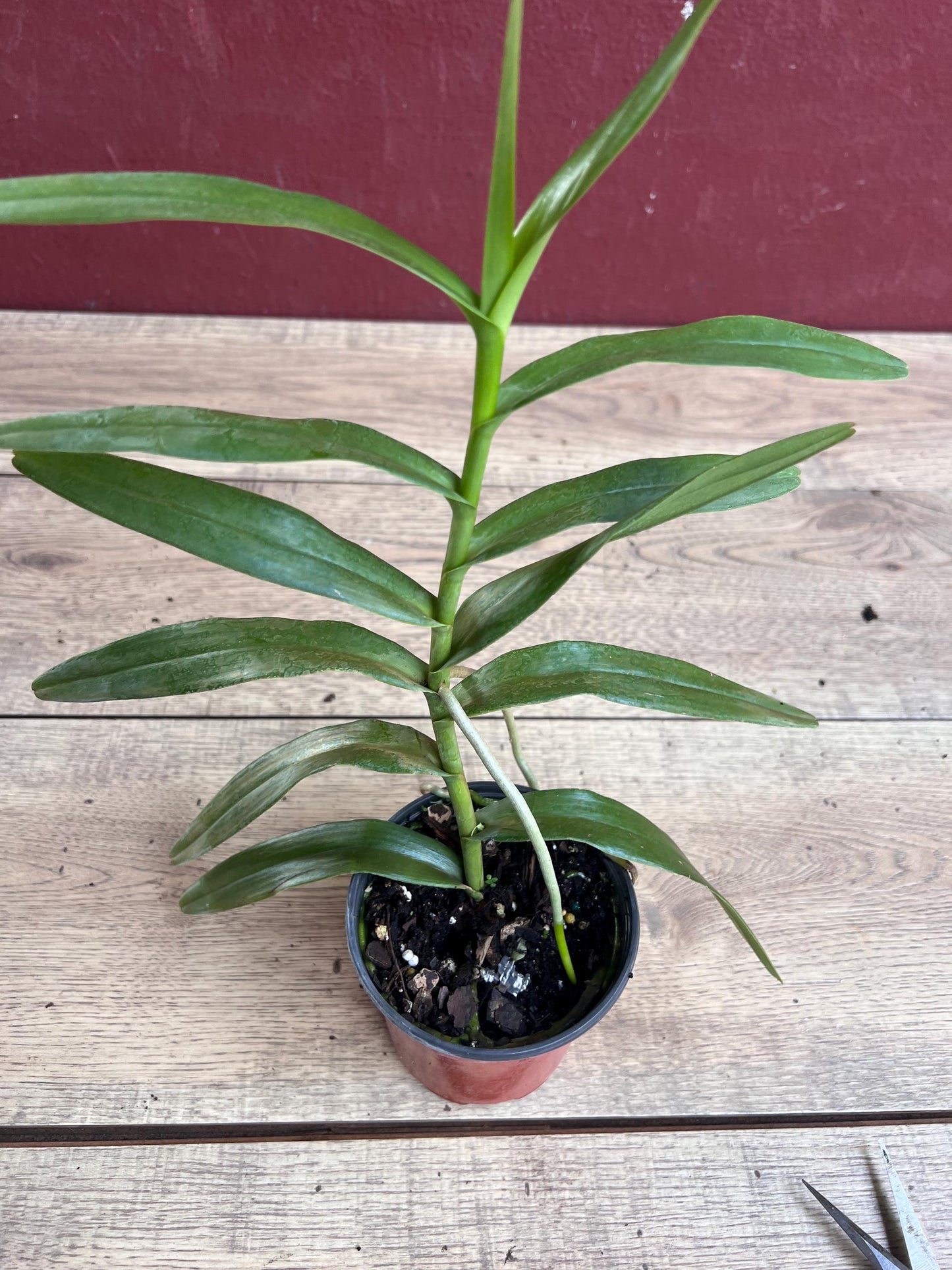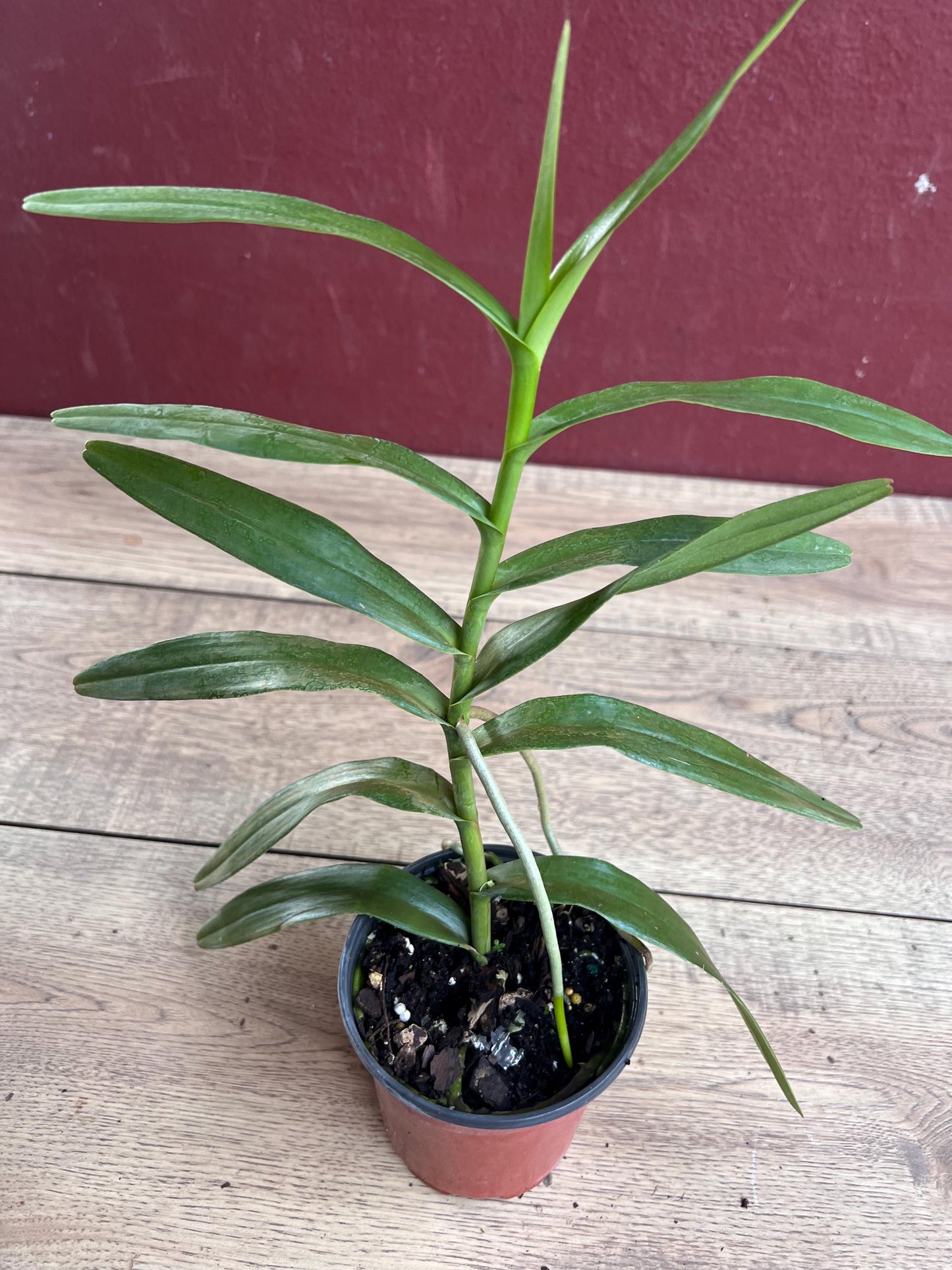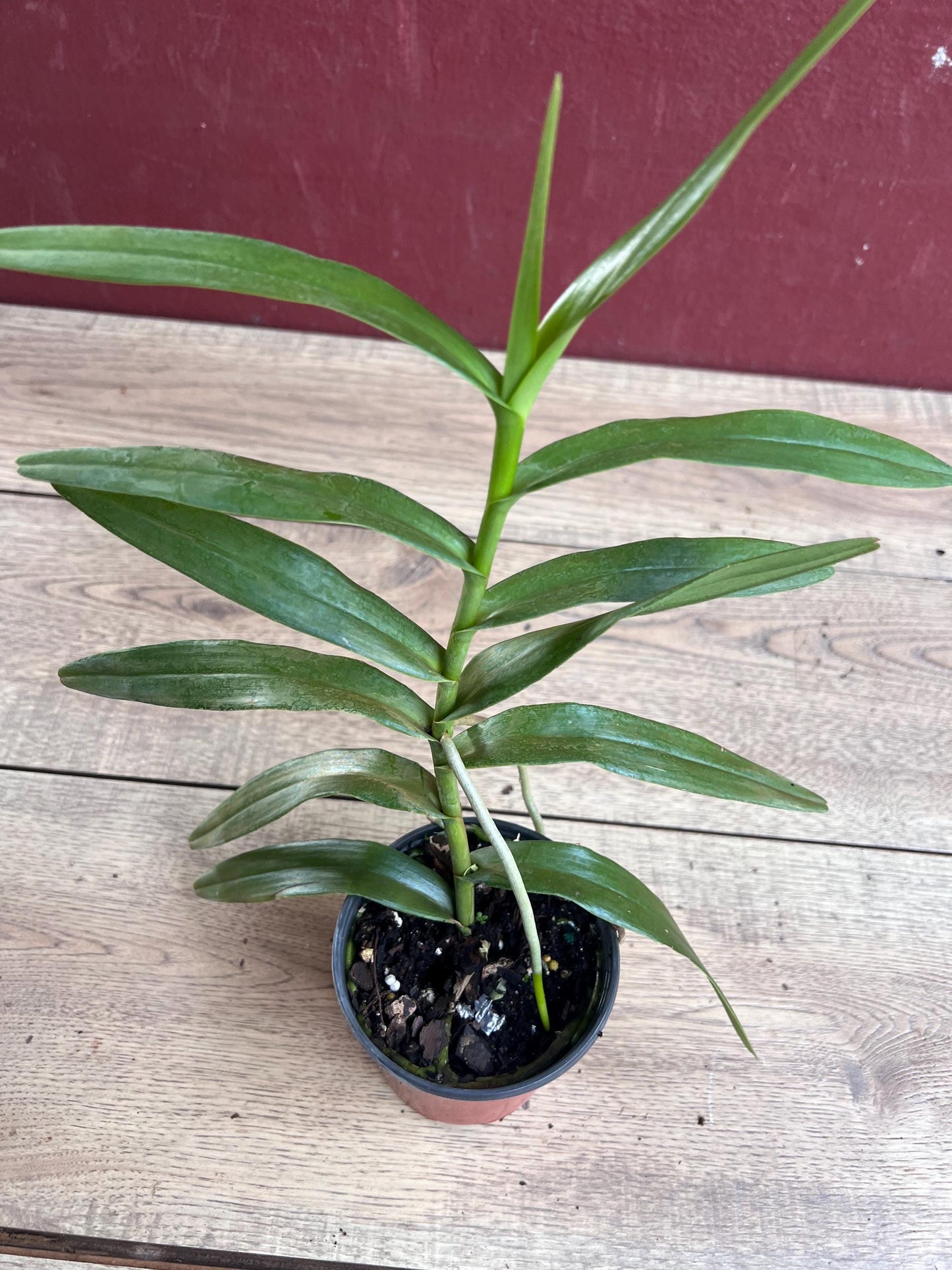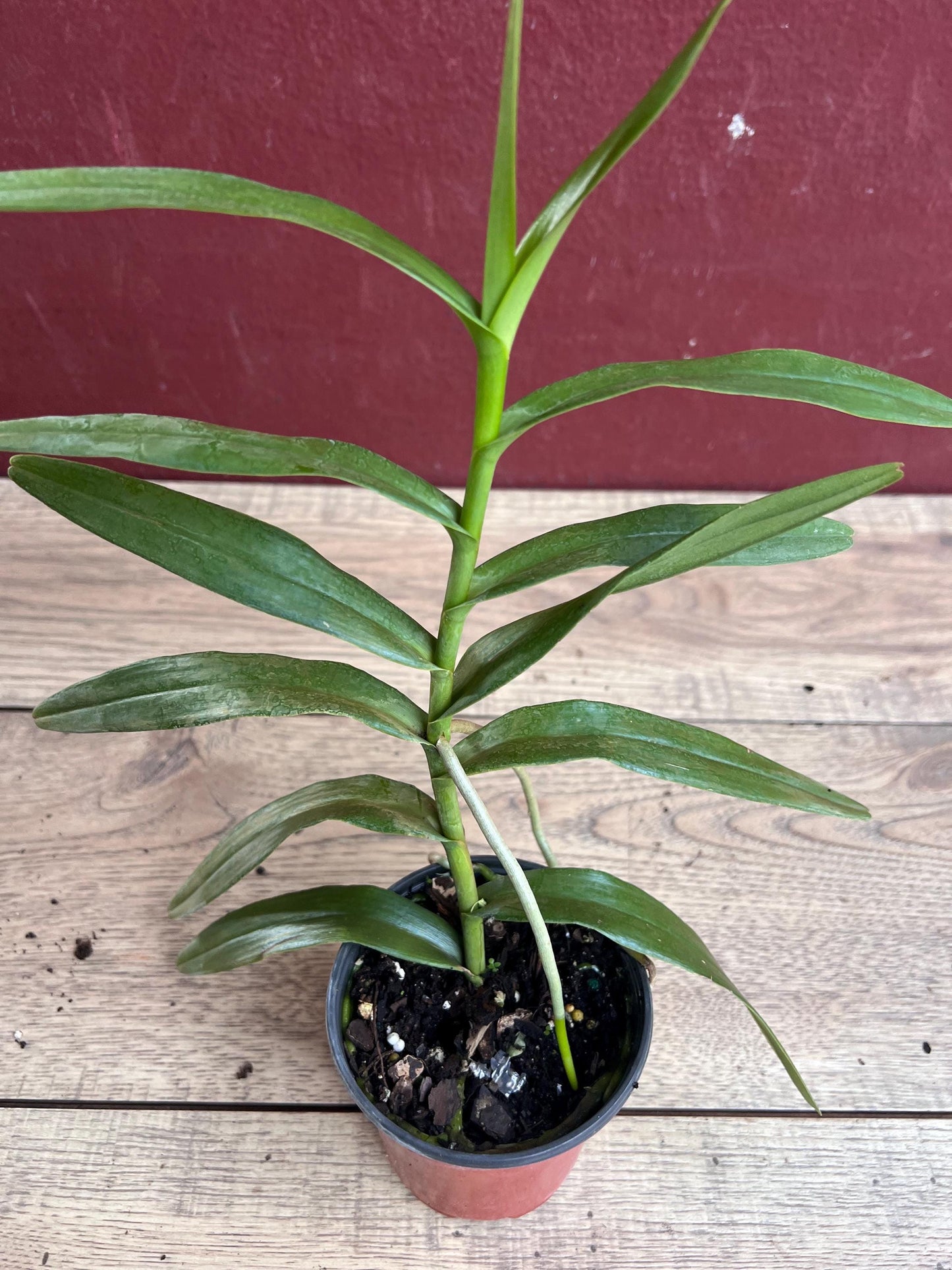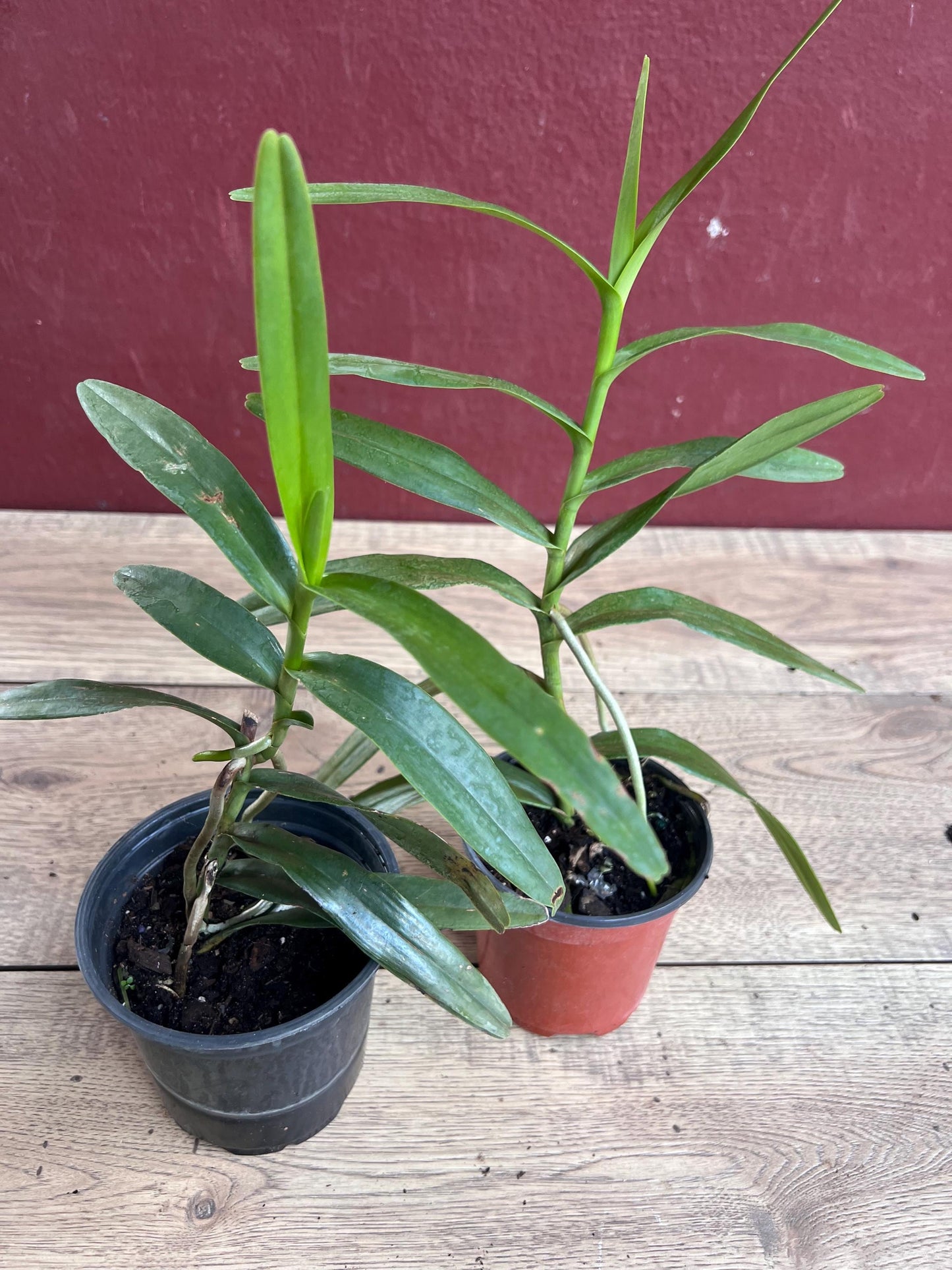Scorpion orchid in 4" Pot, Arachnis, Aranda orchid
Scorpion orchid in 4" Pot, Arachnis, Aranda orchid
Couldn't load pickup availability
Note: You Will receive Scorpion orchid in 4" pot similar to the pictures
The Scorpion Orchid (Brassia spp.) is a striking and unique genus of orchids known for its long, slender, and spidery flowers that resemble the shape of a scorpion, hence its name. Native to tropical regions of Central and South America, particularly in countries like Colombia, Ecuador, and Venezuela, Scorpion Orchids typically bloom in shades of yellow, green, and brown, with some varieties displaying striking patterns and markings. These orchids are epiphytic, meaning they grow on trees in their natural habitat, thriving in humid, warm environments with filtered light. Scorpion Orchids are highly valued by collectors for their unusual and captivating appearance, though they require specialized care, including well-draining orchid mix, consistent humidity, and moderate to bright indirect light to flourish. They are also known for their pleasant, sweet fragrance, which attracts pollinators like moths and bees in the wild.
Light
- Moderate to bright, indirect light is ideal for Scorpion Orchids. Direct sunlight can scorch the leaves, so place the plant near a bright window with filtered light or in a location where it gets some shade. Too little light can result in poor flowering or leggy growth.
Temperature
- Warm temperatures are best for Brassia orchids, ideally between 60-80°F (16-27°C) during the day, with a slight drop at night. They do not tolerate cold well, so avoid temperatures below 50°F (10°C). Keeping them in a consistent, warm environment will encourage healthy growth and blooms.
Humidity
- High humidity is essential for Scorpion Orchids. They thrive in 50-70% humidity. If your indoor environment is dry, consider using a humidifier, placing the pot on a humidity tray, or misting the plant regularly to increase moisture around the leaves. Be careful not to over-mist, as standing water on the leaves can encourage fungal issues.
Watering
- Water when the potting mix is dry to the touch but not completely bone dry. Water thoroughly, allowing excess water to drain out of the pot. Brassia orchids do not like to sit in standing water, so make sure the pot has good drainage.
- In the winter, reduce watering since the plant's growth slows down, and overwatering can lead to root rot.
Soil and Potting
- Well-draining orchid mix is crucial. A typical mix for orchids contains bark, sphagnum moss, and perlite to allow for good air circulation around the roots. Repotting should be done every 1-2 years or when the potting medium breaks down, but be careful not to disturb the roots too much.
- When repotting, choose a pot that is just a little larger than the current one, and make sure it has drainage holes.
Fertilizing
- During the growing season (spring and summer), feed your Scorpion Orchid with a balanced orchid fertilizer every 2-4 weeks. You can use a 30-10-10 fertilizer diluted to half strength. During the dormant period (fall and winter), reduce fertilization or stop altogether.
Air Circulation
- Good air circulation is important for Brassia orchids to prevent fungal and bacterial infections. If growing indoors, ensure the plant is in an area with light airflow, such as near a fan or a well-ventilated window.
Flowering
- Brassia orchids bloom once or twice a year, with their distinctive flowers typically lasting 4-6 weeks. They are highly fragrant, often described as sweet and citrus-like. To encourage blooms, ensure the plant receives the right balance of light, temperature, and humidity. A brief drop in temperature at night can also help trigger flowering.
Pests and Problems
- Pests like mealybugs, aphids, or scale can occasionally infest orchids, so check your plant regularly for signs of pests. Treat with insecticidal soap or rubbing alcohol if needed.
- Root rot is a common issue if the orchid is overwatered or the potting medium doesn't drain properly. Ensure your pot has good drainage and that the roots are not left sitting in water
Share
